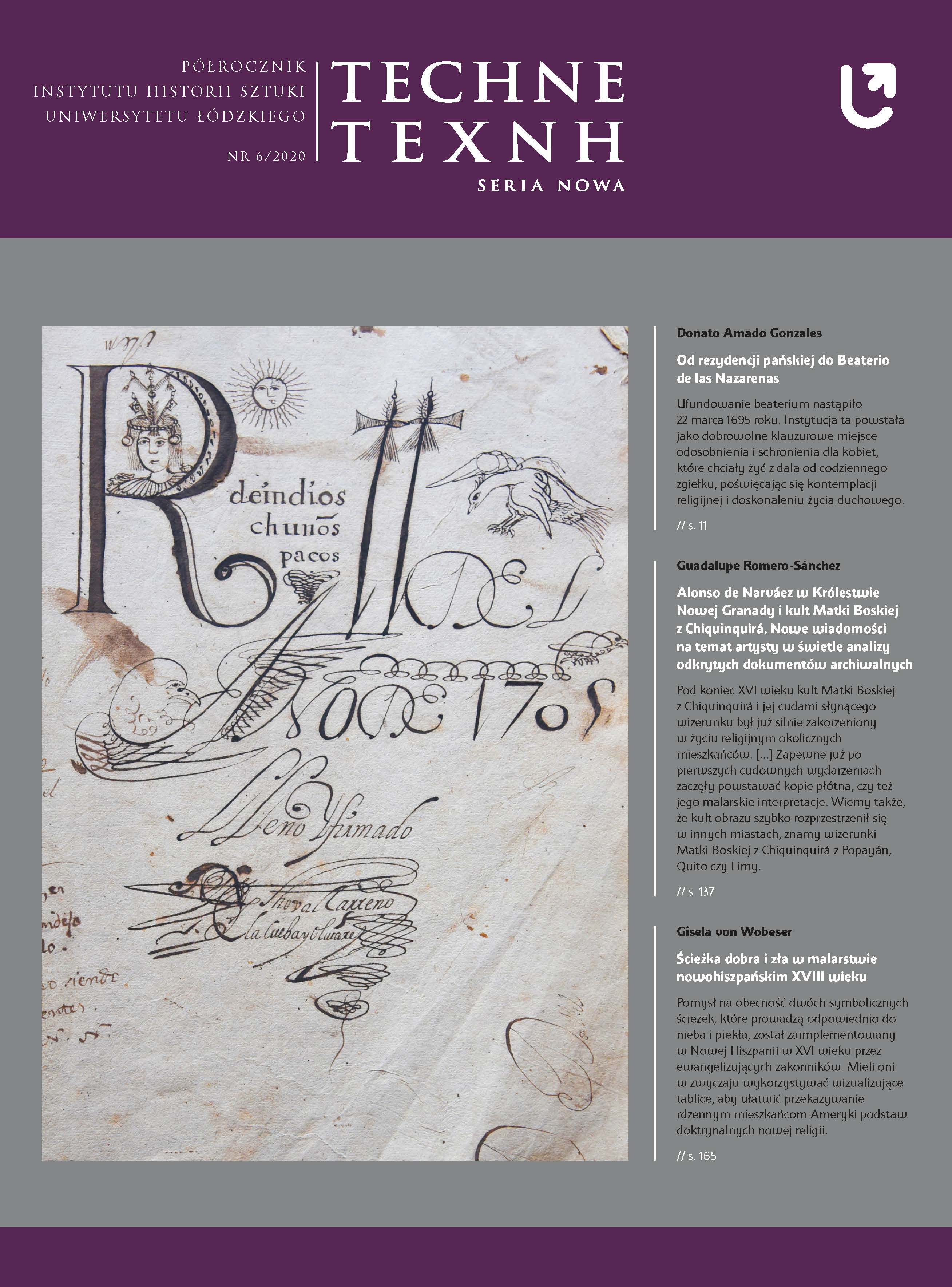Ścieżka dobra i zła w malarstwie nowohiszpańskim XVIII wieku
Path of Good and Evil in New Spain Painting of 18th Century
Author(s): Gisela von WobeserSubject(s): Fine Arts / Performing Arts, Architecture, History of Art
Published by: Wydawnictwo Uniwersytetu Łódzkiego
Keywords: Colonial painting; New Spain; 18th century; religious iconography
Summary/Abstract: Since the Middle Ages, paintings have been an element of the Catholic Church propaganda. The phenomenon intensified in the post-Tridentine period. In its official teaching, the Church used paintings to promote, among other things, the idea that there were two paths for a person to follow: a path of good and a path of evil. The choice belonged to the faithful; they were expected to shape their behaviour so that it remained in accordance with the official teachings of the Church. Obviously, the right choice meant following the “path of good”, which was ethically recommended and led to heaven. It was called the ”path of thorns”, because it meant renunciation of earthly pleasures, goods and temporal satisfactions. It was marked by suffering. The path of evil, guided by the demon, led to hell. It was called the “path of roses”, because it was joyful, filled with earthly delights. Those who followed it could enjoy amusements, led a happy life and gained sensual pleasures. It is worth considering the impact that the above-mentioned images, as well as moralising texts, had on the viewers. Undoubtedly, many people attached great importance to the model of life propagated by the Church at the time. Thanks to them, we have access to information through hagiographies, monastic chronicles and inquisition trials against self-proclaimed saints, mystics and hermits. Many of them were clerics, such as Felipe Neri Alfaro, founder of the Sanctuary of Atotonilco, who led an extremely ascetic life, or Venerable Brother Antonio Margil de Jesús, proposed for beatification. There were also many lay people willing to follow the path of thorns. Such a person was, for example, Francisco Lerín, a wealthy merchant, who sold his material goods and became a hermit devoted to construction of the Marian shrine of Pátzcuaro.
Journal: TECHNE. Seria Nowa
- Issue Year: 2020
- Issue No: 6
- Page Range: 165-188
- Page Count: 24
- Language: Polish

